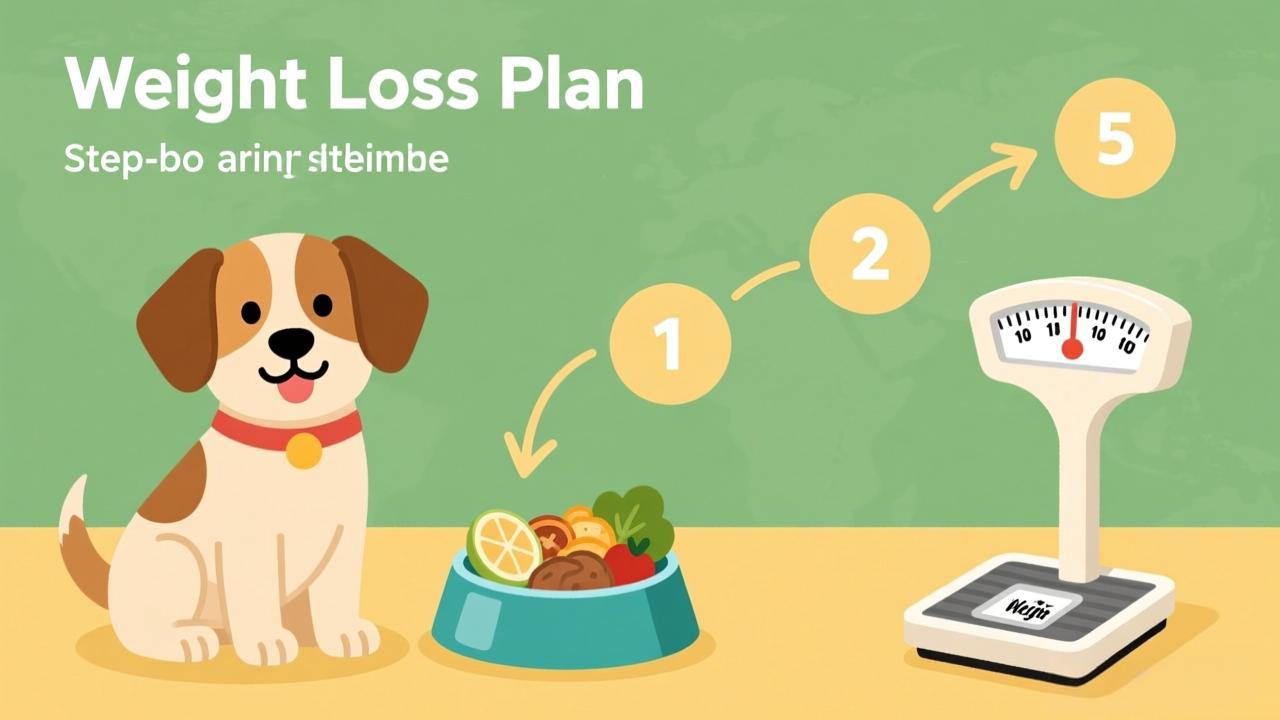Dog Weight Loss Plan

1. Consult Your Veterinarian:
Before starting any weight loss plan, have your dog evaluated by a vet to rule out medical issues and determine an ideal target weight.
2. Diet Management:
- Portion Control: Measure your dog’s food precisely using a scale or measuring cup. Avoid free-feeding (leaving food out all day).
- Quality Diet: Choose a high-quality, balanced dog food formulated for weight management or a lower-calorie formula recommended by your vet.
- Reduce Treats: Limit treats to less than 10% of daily calorie intake. Opt for healthy, low-calorie treats like baby carrots or green beans.
- Avoid Table Scraps: Human food can be high in calories and harmful ingredients. Stick to dog-safe foods only.
3. Exercise Routine:
- Daily Walks: Aim for at least 30 minutes of walking per day, adjusted for your dog’s age, breed, and fitness level.
- Playtime: Engage in active play such as fetch, tug-of-war, or swimming to increase calorie burn.
- Mental Stimulation: Use puzzle toys or scent games to keep your dog engaged without overeating out of boredom.
4. Monitor Progress:
- Weigh your dog regularly every 2-4 weeks to track progress.
- Adjust food intake and exercise levels as needed based on weight loss rate and overall health.
- Aim for gradual weight loss, about 1-2% of body weight per week, to avoid health risks.
5. Lifestyle Adjustments:
- Ensure your dog is not stressed or anxious, as this can cause overeating.
- Educate all family members about the importance of following the plan consistently.
- Keep a daily log of food, treats, exercise, and any observations to share with your vet.
Example Daily Plan (Medium-sized Dog, approx. 25 kg overweight):
Exercise: 30-45 minutes brisk walk + 15 minutes of fetch or swimming
Breakfast: 1 cup of weight management dry dog food
Lunch: Healthy, measured portion of lean protein (like boiled chicken breast) mixed with vegetables
Dinner: 1 cup of weight management dry dog food
Treats: 2 small carrot slices or 3 green beans during training or play